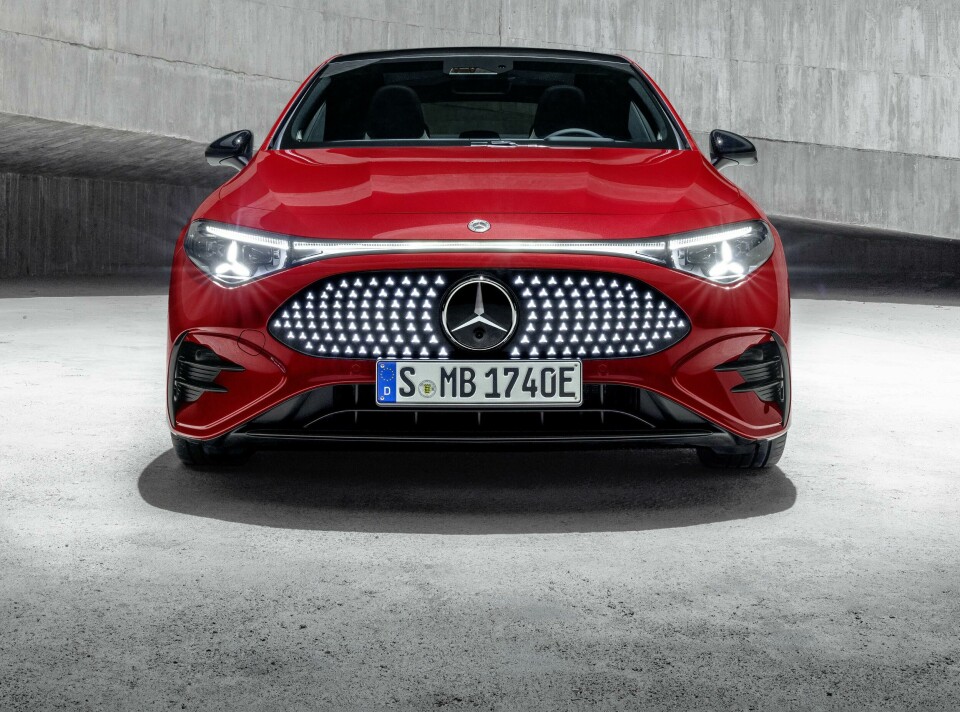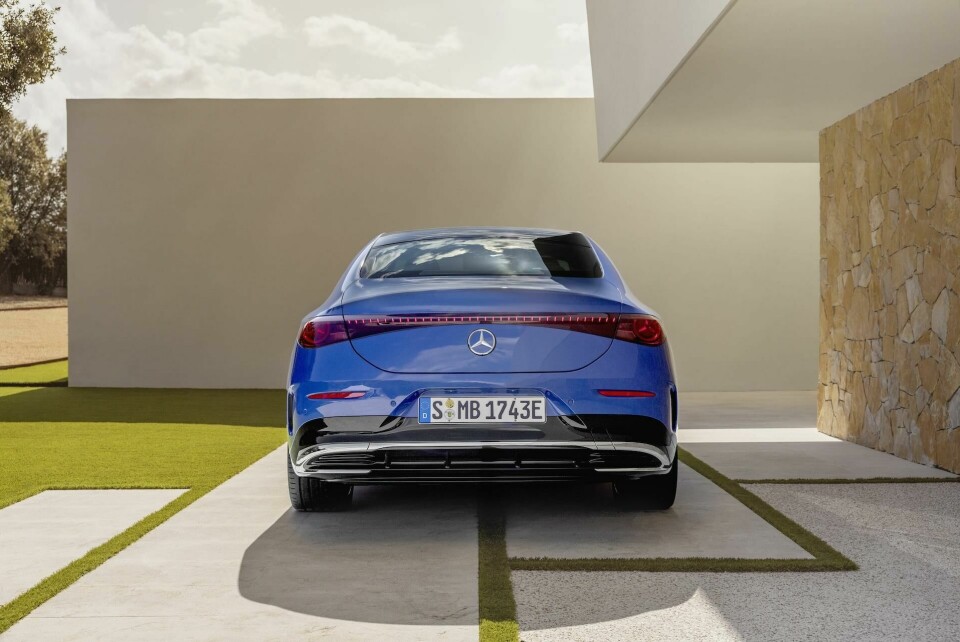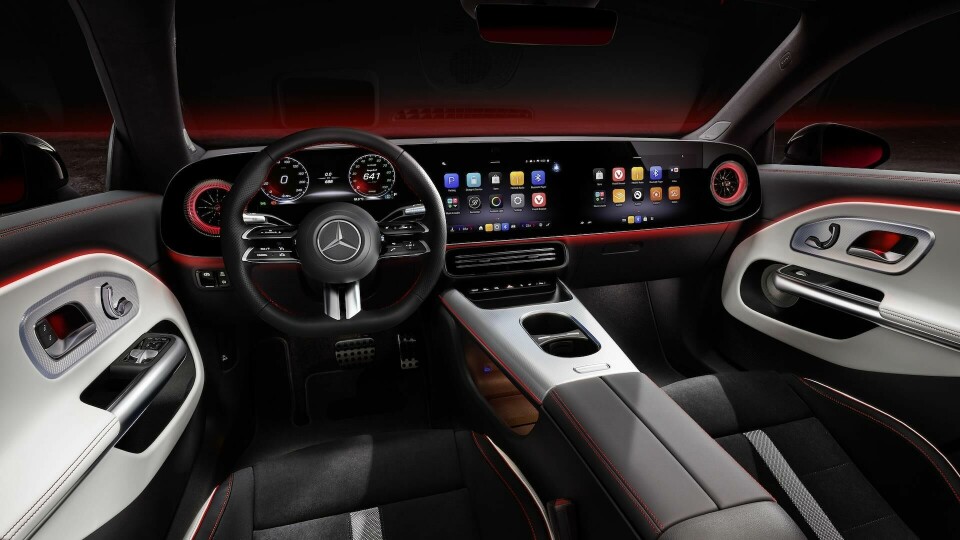
Lighting and screens define new Mercedes CLA
This new generation Mercedes-Benz CLA brings a familiar form to the table, now packed full of technology and more reliant on lighting than ever
The all-new CLA brings a familiar silhouette to the table, a compact, fastback sedan that is bring promoted mainly as an EV but with a hybrid option in tow too. It is illustrative of the brand’s strategy to champion new technology wherever possible, but let’s take a look at the fundamentals first.
Up front, a large Mercedes emblem occupies the centre of the grille, its black background designed to hide the embedded sensor and doing a reasonable job of it. That star motif is repeated across the grille and illuminated to give the impression of a mesh effect. This is flanked by new headlamps that, once separate on the prior generation CLA, are now joined by a thin light bar, almost forming a kind of flattened bow shape. (The new ‘one-bow’ design’?)
This shape is repeated at the rear, with a large star forming the primary detail of the tail lamp. The light signature at large bears close resemblance to its predecessor but is perhaps a little softer now, less glaring and sharp edged. More like a friendly robot. It is pleasing to see the original intent of the concept shown in 2023 has not been watered down too dramatically. Images two and three in the galleries above and below compare the 2025 and 2024 versions respectively.
That star-spangled grille does well to disguise the fact the face of the car is now smooth in line with the majority of other EVs and indeed Mercedes’ own — it is very clearly a close cousin to the EQS. There are other elements that nod to the brand’s flagship EV, too (not least inside the car) including the vents at either corner of the front mask.
At the rear, a thin chromed strip spans the width of the lower mask and frames a large diffuser, wrapping back on itself slightly at each corner to form what we are sure intends to resemble exhaust shrouds. From a distance, at least.

Inside, the cockpit takes digitalisation to new levels — to the point where the IP is now almost entirely screen. Gorden and his team have doubled down on the Hyperscreen it seems and have employed a similar strategy to the EQS. Clearly this is now filtering down to more “entry level” models in the portfolio like the CLA. Enter: the Superscreen.
We imagine this may be divisive. Many will love the overt techiness - a car that feels like a gadget. But a significant minority of drivers have made calls for smaller less in-your-face screens and physical buttons for key functions. It will be interesting to see how the Superscreen is received given time but with social media as a cautious barometer for now, it’s not a unanimous victory.

Regardless, that does not discount the fact that this would have been a huge undertaking for the team, an accomplishment in the truest sense. There would be no shortage of hurdles to jump through and considerations around distraction, ergonomics, intuitiveness — cost. The list goes on. Like it or not, teams of talented individuals will have worked hard to get this through to production. Designers should always be commended for being gutsy.
And physical switches and dials have not been entirely eliminated. There are plenty available on the very multi-functional steering wheel, supported by a thin row of switches on the centre console for hazard lights and such.
For all those physical touchpoints (screen or otherwise) you might not need them. At least that is the idea behind the MBUX Virtual Assistant which, in line with most other brands, has adopted ChatGPT to provide better natural language processing. Or, in simple terms, to create a system that does not need specific, carefully-delivered prompts in order to work. It will handle the usual things like navigation, music and sending messages or making calls, but should give drivers more freedom. To this writer, it does beg the question: why is such a dominating screen even necessary, then?
The centre console itself is monolithic and split on two levels with cup holders and a split armrest taking pride of place up top, with storage and charging down below. There is a clear split in surfaces with a mix of upholstery and metallic finishing, although both and joined visually by a horizontal line of red stitching and red lighting respectively.
As if the Superscreen was not distinct enough, it too is wrapped in ambient lighting and integrates two intimidating jet engine-like air vents at each end, similarly backlit. Indeed, lighting floods the cabin with either sharp LEDs or slightly softer up- and down-lit panels and surfaces. At what point is it more accurate to say “ambient upholstery” to describe the gaps between lighting?
On the EV version, a large frunk occupies the real estate underneath the bonnet. The inclusion of hybrid option ensures the CLA’s more conventional sedan proportions. It is a handsome new model on the whole but it does feel more like the emphasis was more on lighting and technology than sculpture and stance. It almost feels a little Brabus-like with this new direction. There is chrome and opulence, yes, but technology is the decoration and bragging point today.
In the brand’s defence, it has been on this path for some time now and it should come as no surprise to see screens taking centre stage. Mercedes-Benz even has its own UX division, starting in 2015 with “a small team” of 50 people, as UX design lead Klaus Frenzel notes in this 2022 interview, a key takeaway being: ”The screen is a like a playing field, the bigger the screen the more you can do.”


























